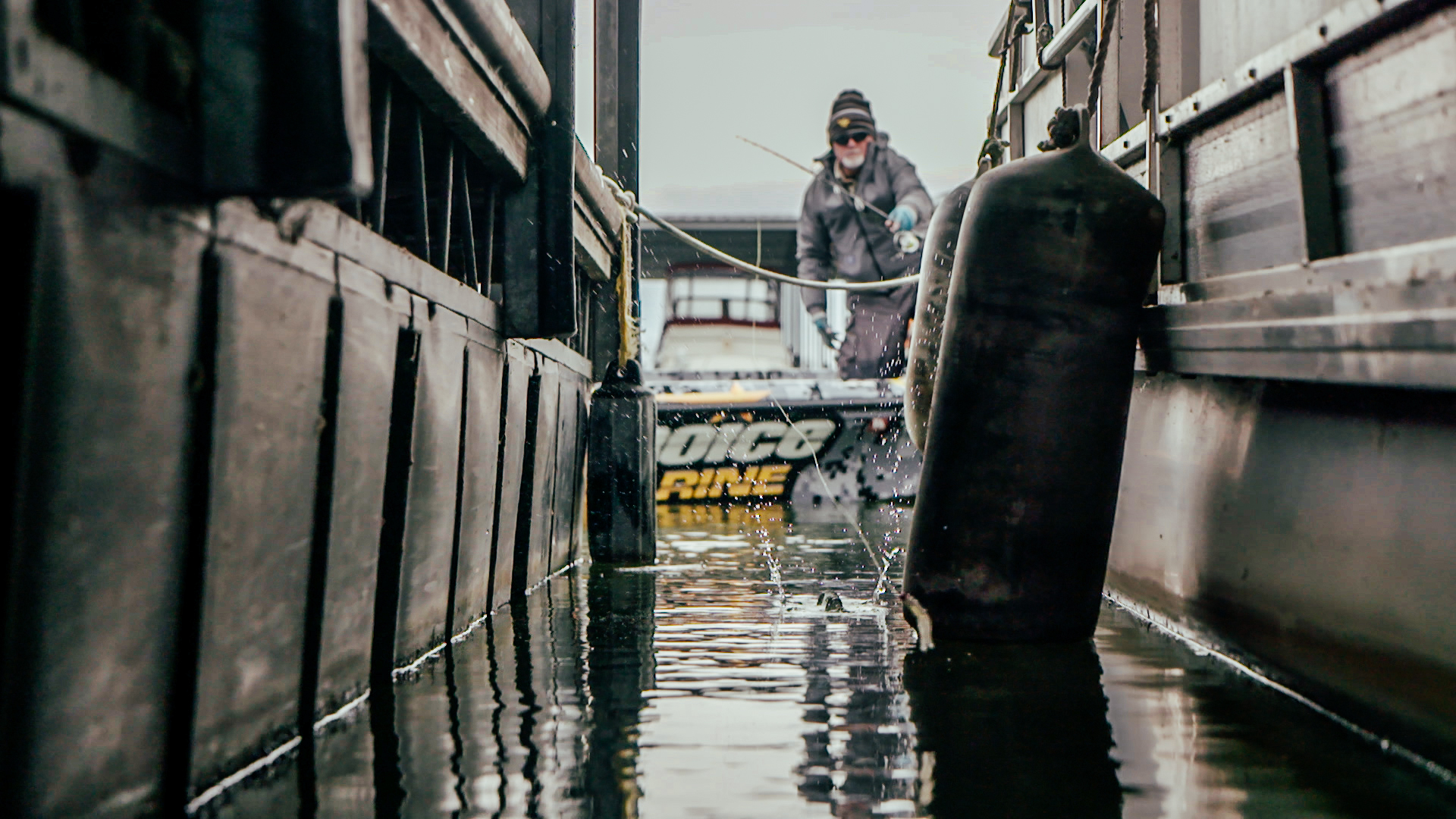Professional angler Terry Blankenship provides an in-depth lesson in shooting docks for crappies schooled up deep underneath docks. The tactic excels at targeting big schools of less pressured crappies that use docks as both structure and cover. Blankenship shares many tips, starting with finding the best fish-holding docks using mapping and sonar. He then shares his preferred rod setup and tackle and how to execute the technique correctly.
FEATURED TACKLE
- JIG – Blankenship Crappie Jig, 1/16-ounce
- PLASTIC – Bobby Garland Minnow Mind’R
- LINE – Vicious Fishing Panfish Fishing Line, Hi-Vis Yellow 6-pound
- ROD – FX Custom Rods Xtreme Angler Series, WMBSH74MF 7’4″ Medium Fast
- REEL – Lew’s Speed Spin Spinning Reel, SS20HS
Blankenship’s 7 tips to catch crappies with the dock shooting technique:
- Find the best docks with mapping and sonar. Blankenship starts his day with a map reconnaissance. Isolated docks on points adjacent to the main river or creek channels are an excellent starting point. Use side imaging to scan underneath the docks, revealing crappies and the physical dock structure. Once he starts fishing, he lines up his casts using a combination of MEGA 360 and forward-facing sonar.
- Start on the shaded side first. Docks provide crappies with structure and cover. Shade is a huge draw for baitfish and crappies, so Blankenship first focuses his effort around the shady side.
- Fish shallow to deep. Crappie schools tend to stack vertically, with black crappies riding higher and white crappies deeper. Blankenship reduces spooking by first picking off the top fish, then working his jig progressively deeper – this method prevents pulling struggling crappie through shallower undisturbed fish. Blankenship counts his jig down to the desired depth, then gives the bait a pop to trigger a bite.
- Use a longer spinning rod. A light, sensitive, medium-light spinning rod in the 7-foot range provides more power and accuracy for further jig skipping and fish-fighting control.
- How to shoot docks for crappies. Blankenship walks us through the dock shooting technique, starting with setting the right about of lead line, establishing a consistent anchor point, and how to hold the jig and plastic to prevent hooking yourself. Like skipping rods, a low release point results in a flatter lure trajectory, resulting in a further and more accurate skip.
- Watch your line. Bites can be hard to detect, so use a bright-colored line to watch for increased or decreased slack or pops to the slack. Set the hook if you notice anything abnormal.
- Be courteous when fishing docks. Sure, the water is public, but the dock is private property. Blankenship avoids fishing docks when the owners are on them.
FISH FINDERS
- CONSOLE – Humminbird HELIX 10 MEGA SI+ G4N
- BOW 1 – Humminbird HELIX 15 CHIRP MEGA SI+ GPS G4N
- BOW 2 – Humminbird HELIX 12 CHIRP MEGA SI+ GPS G4N
- LIVE SONAR – Humminbird MEGA Live Imaging
- 360 SONAR – Humminbird MEGA 360
- MAPPING – Humminbird LakeMaster PLUS, Great Plains V1
BOAT CONTROL
- TROLLING MOTOR – Minn Kota Ultrex
- SHALLOW WATER ANCHOR – Minn Kota Talon, 8′
- ENGINE – Mercury 250hp Pro XS FourStroke












